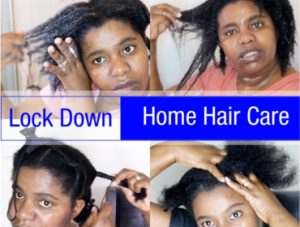
As we stay at home, personal grooming still needs attention. Nothing too complicated. Just the basic stuff so that at the end of this lockdown, you don’t end up with a matted mess of hair or worse, hair loss. So, let’s come up with a hair routine that will work for you during this lockdown period while the hair salons are closed.
What to consider first when coming up with a routine/regimen
Your lifestyle
Why? A routine that will work for a busy mother of 3, will not be the same for the single woman who stays alone.

How often you train and sweat, and whether you prefer wearing wigs or your natural hair all the time also has a bearing on your hair care routine.
The condition of the hair
Your hair routine depends on whether your hair is relaxed or natural, how dry it tends to get or if you have any scalp issues that may need attention now and again.
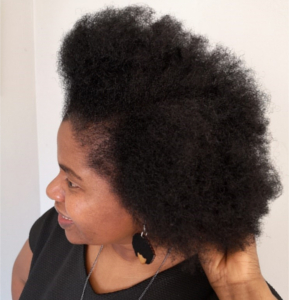
Your hair goals
Health of hair and scalp is kind of common, I mean who doesn’t want that right? But if your goal is length retention, low manipulation hairstyles, protective styling and making sure your ends are trimmed and neat will be top on your hair priorities.
If you are in a place where you just want to play with your hair and experiment with what else you can do with it, then wearing it in different hairstyles, different colours and shapes will interest you more.
Now, let’s get into the 4 basic steps that you may want to include in your regimen.
Cleansing or Washing the hair
Detangling
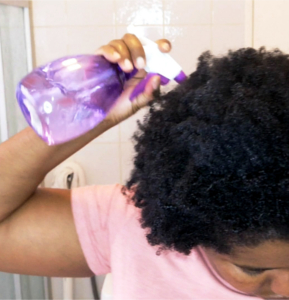
If you have longer hair that tangles a lot, you may need to deal with detangling before washing your hair. That way, you can deal with any knots and take out any shed hairs that may be stuck in your hair. Use water and a detangling conditioner to detangle your hair.
Shampooing
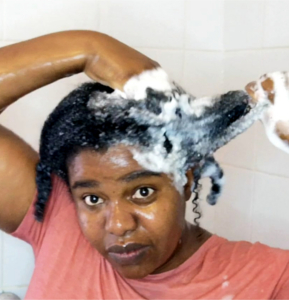
You will need to use a shampoo that deals with the condition of your hair. Use a moisturising shampoo for dry hair, a protein-enriched shampoo for damaged or thin hair and a clarifying shampoo for greasy hair or if you have a lot of build-ups.
Apply the shampoo on the scalp and rub in to lift all the dirt and any build-up that may be there. There’s no need to rub the hair as the shampoo that will get onto the hair when you are rubbing the scalp is enough to cleanse the hair.
Never use the nails to scratch your scalp. You may cause scarring and even hair loss. Use the pads of the tips of your fingers.
Always rinse the shampoo thoroughly before conditioning.
Conditioning the hair
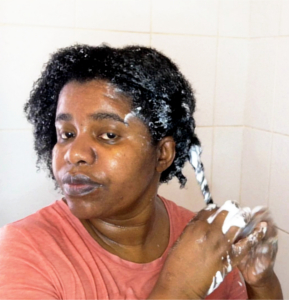
Now, if you don’t have a conditioner, you have no business trying to wash your hair. Whether natural or relaxed, always condition your hair after shampooing.
A shampoo strips out the dirt and oils from your hair, but it also leaves the hair very dry. What the conditioner does is to soften the hair again.
This is good for the hair and it also makes the hair feel good to the touch. Dry hair breaks easily. Soft hair is more pliable, manageable and retains length.
Apply the conditioner to the whole length of the hair, concentrating on the ends which tend to be dryer than the rest.
Use an appropriate conditioner, depending on the condition of your hair and what it needs most at that time. If thin and breaking, a protein conditioner may be ideal. If too dry and feeling like straw, then a moisturising conditioner is best.
Rinse out the conditioner before applying any styling products.
Deep conditioning
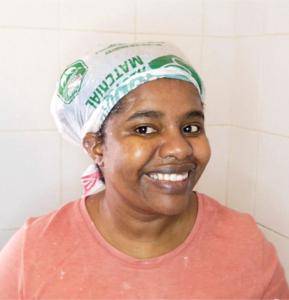
This is important to do at least once a month and some people do it every time, they wash the hair with great results.
Use a conditioning mask that is ideal for your hair needs, either protein or moisture. Apply on freshly shampooed wet hair and leave on for at least 5 minutes or according to the product instructions.
You may want to cover your hair with either cling wrap, a plastic cap, a conditioning cap or even a grocery plastic if you don’t have any conditioning cap at hand so that the heat your head produces is trapped in the plastic and aids in opening the cuticles of your hair for that deep treatment to be even more effective.
Otherwise, if no heat is used, the product may simply sit on top of your hair especially if you have low porosity hair.
Rinse out the deep conditioner after the stipulated time.
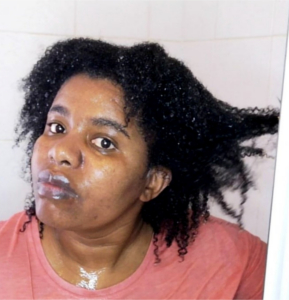
2. Styling the hair
Leave-in conditioner
This should be applied every time you wash your hair and can also be applied to re-moisturise your hair in between washes. A leave-in conditioner acts like a primer before applying any styling products.
African hair is relatively dry and a leave-in conditioner makes sure your hair stays conditioned throughout and retains moisture better.
Styling the hair
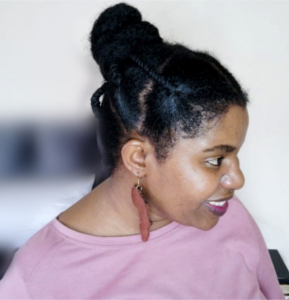
Protective styling or styling for aesthetics, hair needs to be styled. The styling products used depend on what style you are going for.
If protective styling, you would like to make sure the hair has enough moisture locked in until the next wash. Especially so if you choose a long-term protective style like braids, twists or crochet braids.
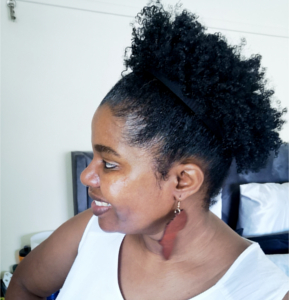
If doing a wash n’ go, then select a curling cream, pudding or gel that will help you mould your curls and set them in place. You can keep a wash n’ go hairstyle for about 5 days before you need to wash and renew your hairstyle.
 Twist outs and braid outs are also options for styling natural hair which are shorter-term and hair can be washed weekly or even twice a week.
Twist outs and braid outs are also options for styling natural hair which are shorter-term and hair can be washed weekly or even twice a week.
If relaxed, blow-drying is an option and always remember to apply a good heat protectant before blow-drying the hair to avoid damage and breakage.
You can also wrap your hair and let it air dry. Bantu knots on relaxed hair will give you gorgeous curls without using heat to style your hair.
3. Scalp Care
For braids and other long-term protective styles, spritzing daily with a water-based spray or spritzer will serve you from dry scalp and hair.
If your hair is loose, basing your scalp with either a scalp moisturiser, hair oil or hair food at least twice a week will keep your scalp well-nourished and the itch away.
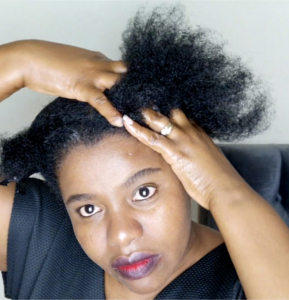
Massage your scalp daily or after basing your scalp for at least 5 minutes for good blood circulation on your scalp.
4. Night routine

Twisting, braiding or wrapping hair for bed is a way to keep your hair stretched and easier to style the next day.
Cover your head with a satin or silk head wrap or bonnet before going to bed. If that’s not your thing, consider investing in a satin or silk pillowcase.
Although a pillowcase will not keep your hairstyles neat for longer like a head wrap or bonnet, it will protect you from the friction that cotton pillowcases will have with your hair which may cause unnecessary breakage.
Sample Hair Care Routine/Regimen
Here are 2 sample routines that you can tweak to suit your hair and lifestyle. The first routine is based on relaxed or flat ironed hair. The second is based on natural hair which is not in a protective hairstyle.
Relaxed or flat ironed hair weekly routine
- Saturday – Shampoo, deep condition, apply leave in conditioner. Blow-dry or wrap to air dry
- Sunday – Base scalp with oil or hair food and massage.
- Monday – Apply hair oil/serum or moisturising cream/leave-in conditioner on the hair
- Tuesday – Apply hair oil/serum or moisturising cream/leave-in conditioner on the hair
- Wednesday – Conditioner-wash, apply hair oil or leave-in conditioner
- Thursday – Base scalp with oil or hair food and massage.
- Friday – Apply hair oil/serum or moisturising cream/leave-in conditioner on the hair
- Saturday – Shampoo, deep condition, apply leave-in conditioner. Blow-dry or wrap to air dry
Natural hair weekly routine
- Saturday – Shampoo, deep conditioning. Chunky twist or braid to dry
- Sunday – Twist outs/Braid outs
- Monday – Hair in twist out/braid out.
- Tuesday – Twist out/braid out. Re-moisturise and re-twist hair before bed
- Wednesday – Twist out/braid out.
- Thursday – Twist out/braid out. Re-moisturise and re-twist hair before bed
- Friday – Twist out/braid out.
- Saturday – Conditioner wash. Chunky twist or braid to dry
You can go on and watch the video below on how to create a routine for your hair care at home.

